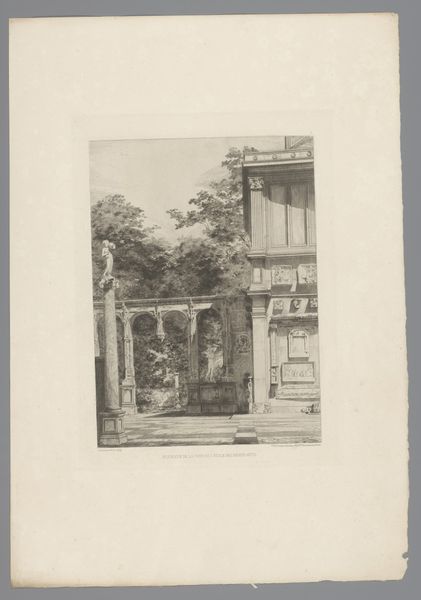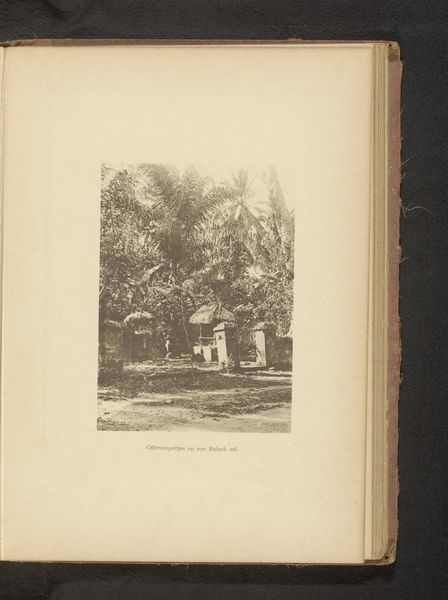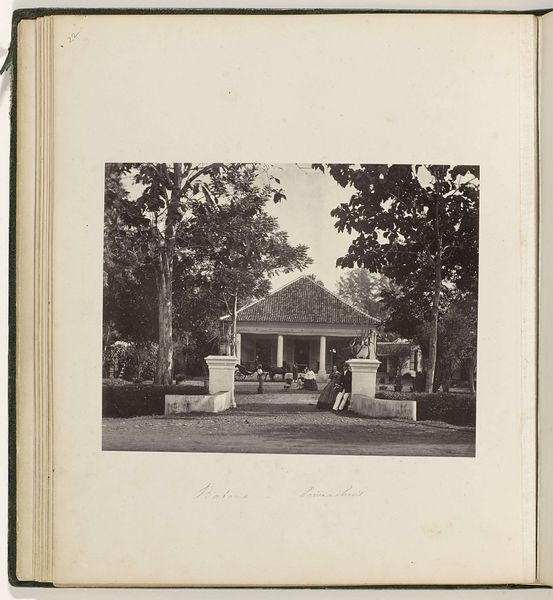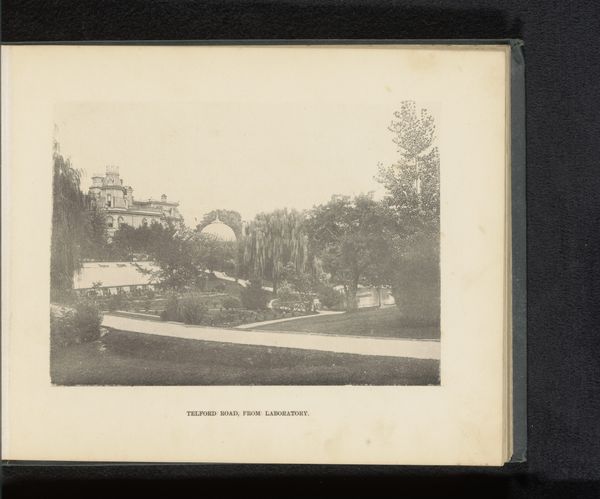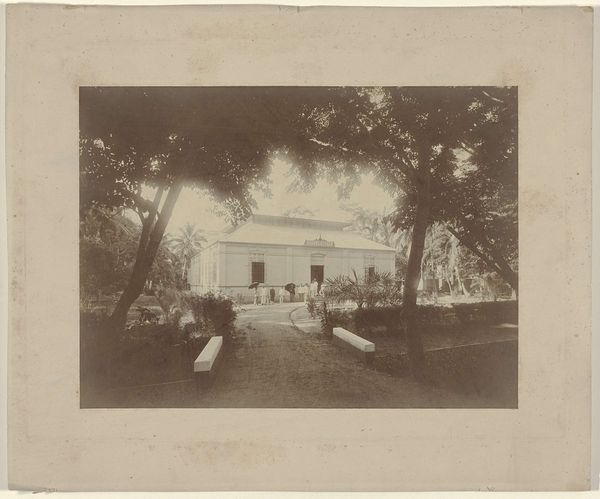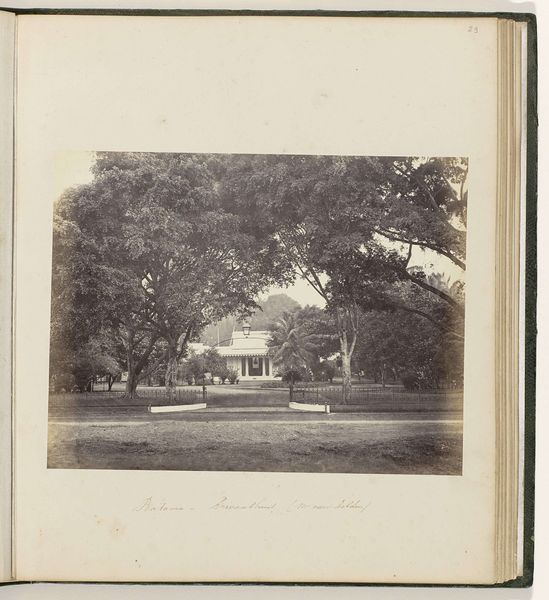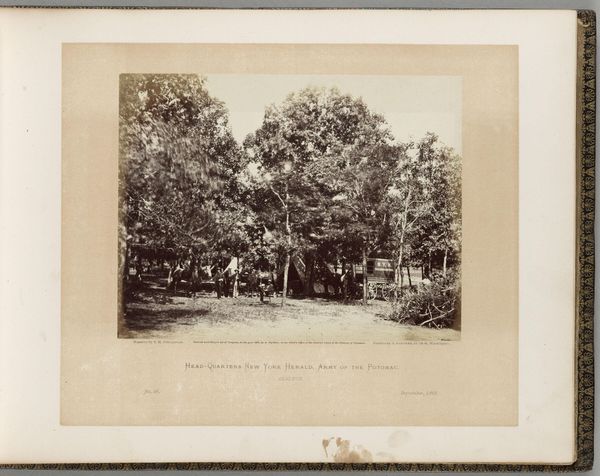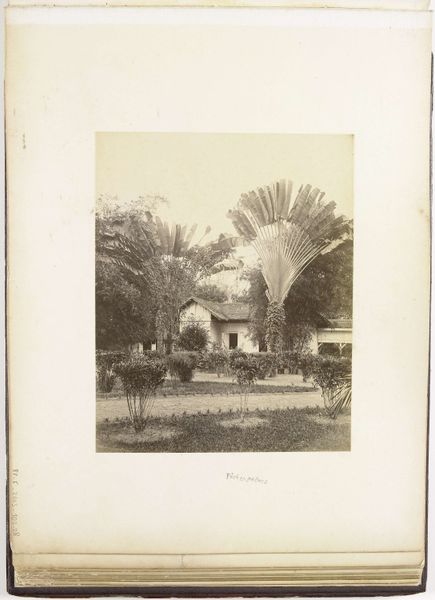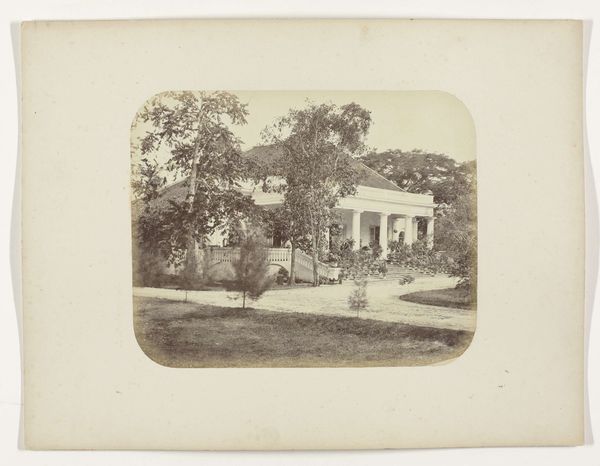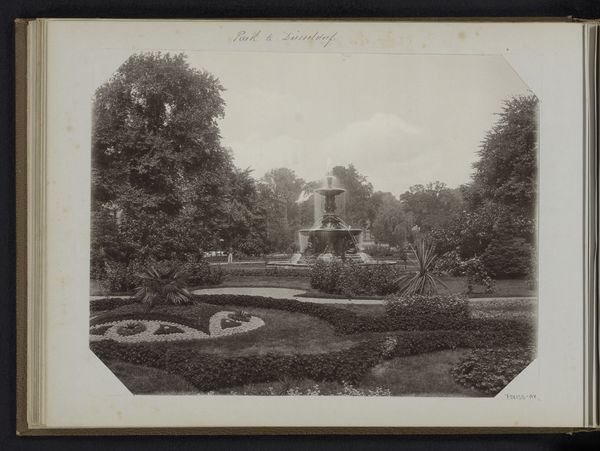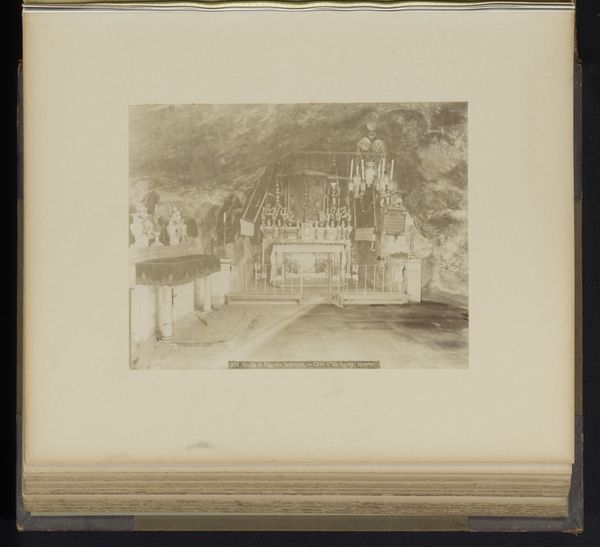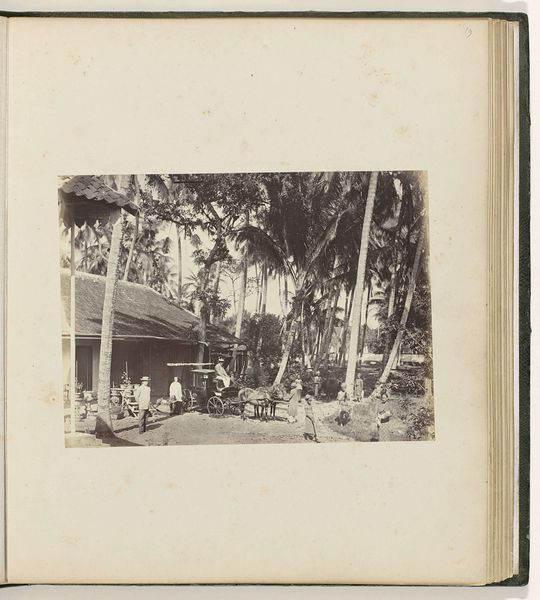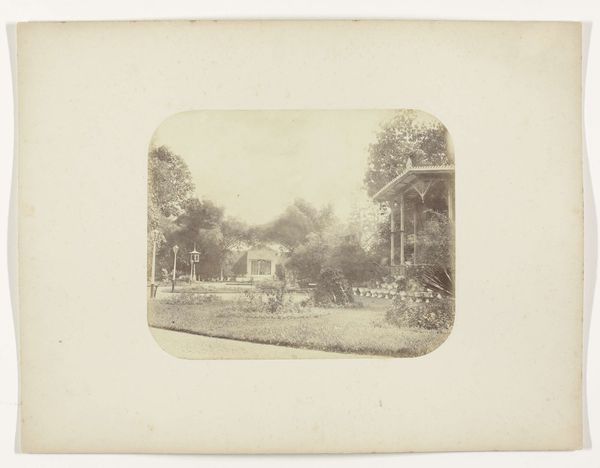
Barbarossaruïne of Maartenskapel op het Valkhof, Nijmegen, met de beheerder van het Valkhof c. 1885 - 1890
0:00
0:00
photography, albumen-print
#
pictorialism
#
landscape
#
photography
#
cityscape
#
albumen-print
Dimensions: height 220 mm, width 277 mm
Copyright: Rijks Museum: Open Domain
Curator: What a tranquil scene. This albumen print by Wilhelm Ivens, titled "Barbarossaruïne of Maartenskapel op het Valkhof, Nijmegen, met de beheerder van het Valkhof", captures a view of the Barbarossa ruin around 1885-1890. Editor: The albumen gives it such a soft, sepia-toned wash, doesn't it? It feels instantly nostalgic, almost like a staged theatre backdrop. All that foliage… I wonder, how much retouching went into this? Curator: The softness speaks to the influence of Pictorialism, striving for artistic effect through manipulation. What strikes me is the symbolism embedded within ruins; the arch calls to mind ideas of resilience, history’s echo... especially set against the newer plantings and carefully kept pathways. Editor: The presence of the park keeper centers it, though. This image, down to its very chemical make-up, tells a story about material change. The albumen itself is a protein, bound to the paper, permanently altered. These layers speak to cycles of decay and preservation, commodified in photographic form for distribution and trade. How was this consumed, archived? Curator: Interesting. The figure stands at the threshold of past and present, then—caretaker of physical ruin and photographic memory. Look closer – the way the photographer composed the view invites introspection; each form signifies themes like preservation and human dominion over both time and place. Editor: Absolutely. And the medium itself plays a crucial role in how that dominion gets exerted. We're seeing here a crafted commodity intended for visual consumption. Mass production impacts and mediates not only cultural heritage and iconography but it creates networks through the very circulation of this printed object. Curator: So it isn't solely a reflection on what's depicted but equally revealing of its socio-economic dimensions? Very insightful. Editor: Precisely. An unassuming photographic print speaks about materials, work and value that helped make history so… tangible, one little sepia scene at a time.
Comments
No comments
Be the first to comment and join the conversation on the ultimate creative platform.
